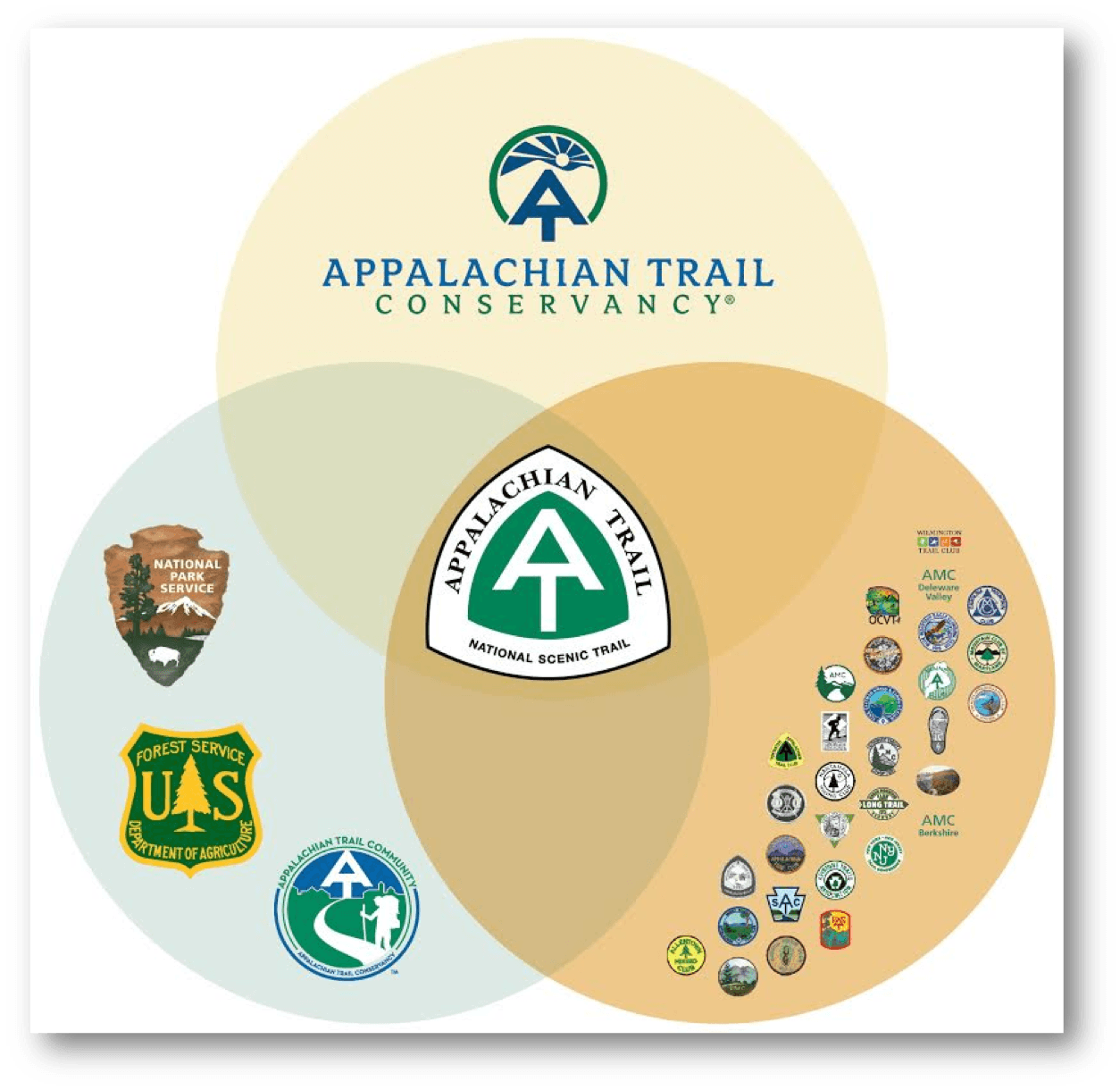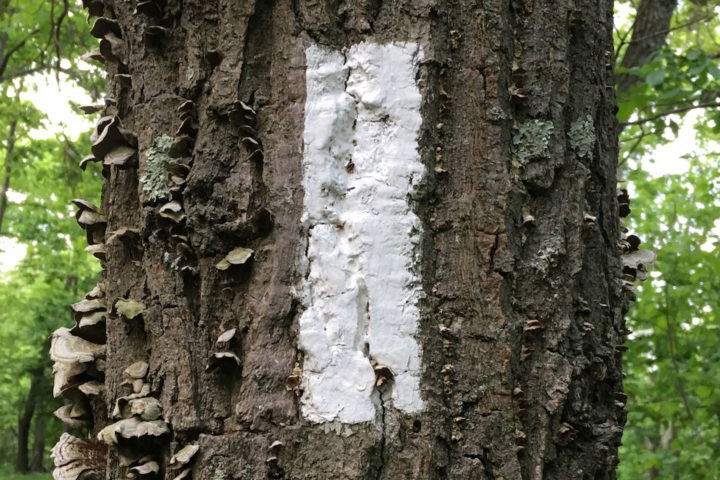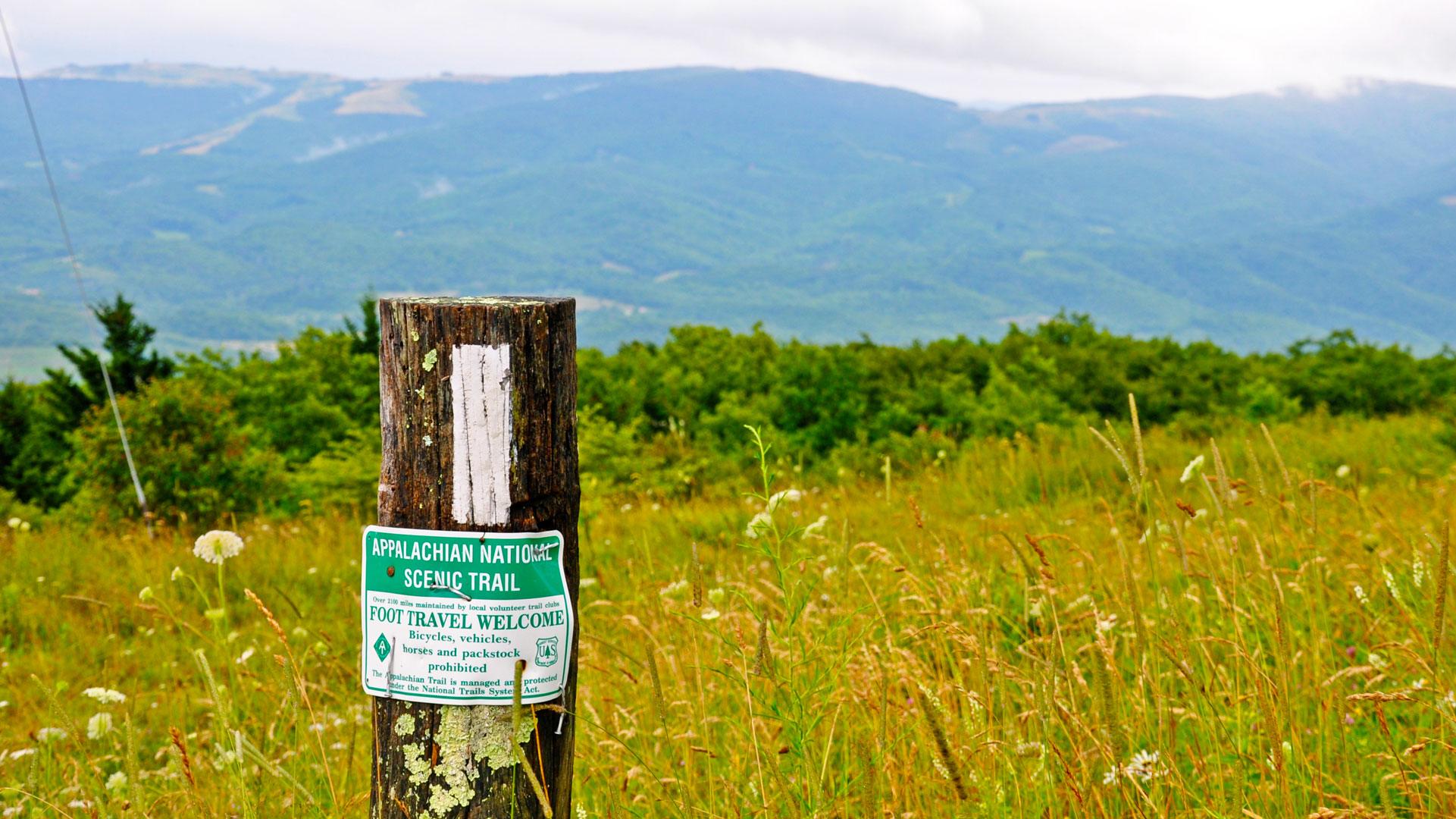By Tom Derr
Cooperative Management is Key on the A.T.
October 1, 2019
As one of the 11 National Scenic Trails in the United States (and one of only two designated at the enactment of the National Trail Systems Act), there is an extensive network of managers and maintainers responsible for protecting the Appalachian National Scenic Trail (A.T.). Over the A.T.’s nearly 100-year history, countless individuals, organizations and government agencies have worked together to ensure that the natural beauty and cultural heritage of the Trail are preserved forever, for all. While each of these groups serves the Trail in a different way, their actions support each other and are each necessary to achieving the ever-changing needs of the Trail in a complex environment.
The ideals embodied by the A.T. are not bound by the various jurisdictions that the stakeholders of the A.T landscape operate in. This is made possible only by a cooperative management system that allows a diverse group of people to work together to ensure that the A.T. is properly preserved and managed. This style of management is highlighted in the National Trail System Act (NTSA) of 1968, recognizing that such expansive trails and lands could only be feasibly managed under a cooperative system. In fact, according to the NTSA, a National Scenic Trail can be designated only if an advisory council compiled of representatives from each of the three legs discussed above is first established.
Ultimately, the A.T. would not survive and thrive without the dedicated work of these three separate, but interlocking, categories of cooperating Trail champions. It is for this reason that cooperative management on the A.T. sets a high standard and benchmark for other natural resource and trail cooperatives striving to take on similar feats. Successful cooperative management structures are important now more than ever, as growing complexities such as the threat of fossil fuel development and climate change pose severe challenges to our shared cultural and natural resources. Cooperative management of the A.T. requires effective planning across multiple agencies and jurisdictions. The result of such planning can be more balanced development of the most necessary infrastructure.
This system of cooperative management is perhaps best described as a three-legged stool. The first leg is the combined work of the 31 volunteer-based Trail Clubs, which are directly responsible for maintaining and managing their assigned sections of the Trail. Whether these sections range from a few miles in length to nearly 300 miles, the Clubs have served as the best resource for providing local knowledge while proudly preserving the A.T. footpath through vigilant volunteer engagement.
The second leg of the stool is the local, state and federal agency partners that manage the lands that the Trail traverses. As a National Scenic Trail, the A.T. is a unit of the National Park System (NPS) but runs through seven units of the U.S. Forest Service, six other National Park units, two National Wildlife Refuges, and many state-administered lands. The Appalachian National Scenic Trail Park Service Office (known as APPA) is the NPS office responsible for oversight and administration of the Trail under the direction of the park superintendent. And though trail clubs are directly responsible for the day-to-day maintenance and management of the A.T. footpath, local, state and federal agencies are critically important for preserving the corridor the Trail lives in.
The third and final leg of the cooperative management stool is the Appalachian Trail Conservancy (ATC), which acts as the connective tissue between the clubs, federal agencies, and the broader public. Headquartered near the mid-point of the A.T. in Harpers Ferry, West Virginia, the ATC was first known from 1921 to 2005 as the Appalachian Trail Conference. From then until now, the ATC has fulfilled its obligation to support trail management and to set policy direction that guides volunteer Trail workers, to educate hikers about Trail conditions and to advocate for the protection of the Trail through effective state and federal policy decisions.

The A.T. cooperative management system ensures that the Trail has the variety of expertise and support necessary to ensure its long-term preservation and maintenance.
Each of these “legs” support a collaborative decision-making process known as the “cooperative management system.” Volunteers bring on-the-ground knowledge, experience and operational capacity, and the land management agencies bring resources, expertise and specialized skills. Uniting the two is the ATC ensuring Trail-wide consistency in upholding the natural and cultural values for which the Trail is protected while keeping volunteers at the forefront of A.T. management. Achieving consensus between these three entities is a priority; the ATC encourages each member of the partnership to take a step back and re-focus on the values of the Trail if collective decisions can’t be reached.
Discover more about the Cooperative Management System
Discover More

Stay Informed
Latest News
Read the latest news and updates about the Appalachian Trail and our work to protect it.

Be a Voice for the Trail
Advocacy
Whether on the Appalachian Trail or on Capitol Hill, obstacles arise every day that threaten the Appalachian Trail. We're here to protect it. Learn more about how we stand up for the A.T. and it's surrounding landscape — and how you can help.

Take a walk with the ATC's official blog!
A.T. Footpath
Learn more about our work and the community of doers and dreamers that help protect and celebrate the A.T.






